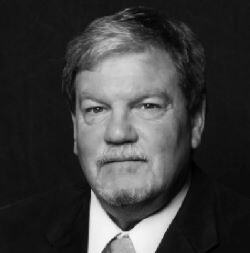Making an Impact
Reflecting on IFMA’s Advocacy Day

After a five-year hiatus, IFMA’s Government Affairs Committee hosted IFMA’s 2024 Advocacy Day and Public Policy Forum in person in Washington, D.C., USA. A two-day event focused on taking an active part in legislation impacting facility management, Advocacy Day connects IFMA members to elected officials and key staff to discuss policy and champion industry interests and priorities. Forty participants representing IFMA chapters from all over the United States, including Puerto Rico, made the pilgrimage in mid-September to the U.S Capitol building.
Organized by IFMA’s Executive Director of Government Affairs Jeff Johnson, Lena Thompson and Jason Callas of IFMA’s Global Board of Directors, and with the assistance from staff at PACE, LLP, the event picked up right where the group left off in 2019.
Every Advocacy Day visit exerts the FM industry’s influence on elected officials. Each discussion has an impact. Voters and constituents catch the attention of U.S. congressional offices, and their voices are heard. As members of IFMA, attendees raise the visibility of both the association and the profession. They showcase expertise and knowledge by discussing relevant topics intelligently, heightening the industry’s credibility.
Even though IFMA maintains a presence on Capitol Hill to monitor activities and keep the association visible, the ones who can make a true impact are members – IFMA's greatest resource – when they channel their passion to help shape public policy.
Tours & training
Advocacy Day typically begins with a facility tour of a federal building, followed by , an educational session to explain how to meet with legislators and their aides. Participants are advised on areas to avoid, such as political rhetoric and the use of acronyms, and to simplify concepts that FMs take for granted. Talks should center around job creation, cost efficiencies and positive actions – topics that elected officials feel will resonate with their constituents.
Attendees are given a comprehensive briefing on topical, relevant issues ranging from federal real estate to indoor air quality. The common denominator for 2024 was legislation focused on the role of facility managers, and how FMs are an integral resource in supporting the Federal Government in managing and maintaining high-performance buildings.
The second day is spent with elected officials and their aides. The 2024 event included a presentation from the head of the GSA (General Services Administration) Public Building Service (PBS), who discussed federal buildings. The GSA contributes to the management of about US$500 billion in U.S. federal property, divided chiefly among 8,700 owned and leased buildings. Part of these talks focused on occupancy numbers and underutilized space throughout the government.
Day two also includes opportunities with several members of Congress and staff who offer a wide variety of opinions on legislation with the potential to impact the built environment including workforce training, indoor air quality, reinvestment in commercial buildings and related topics.
Topics of discussion
Participants divide into smaller groups to speak with their state legislators. . Attendees are equipped with a fact sheet and talking points designed to intrigue and inform those with whom they meet. Perhaps more this year than in any other, IFMA’s message and priorities seemed to resonate. Only time will tell how much direct impact these discussions had, but the prior passage of the Federal Buildings Personnel Training Act and other pieces of legislation after previous visits proves IFMA representatives can make a difference.
Some excerpts:
Realignment of Federal Real Estate Portfolio
IFMA has long supported this initiative, which would reduce waste, increase productivity and ensure that federal buildings are assets, not liabilities. COVID-19 has had a lasting impact on how and where federal employees work. The resulting underutilized or completely vacant facilities continue to have an effect on the federal workforce and the communities surrounding the buildings.
Most federal facilities are designed to last 50 years or more, so the realignment of these buildings would yield proceeds from the value of the property and result in significant savings by avoiding operational costs and those factors associated with managing the facilities, thereby minimizing detrimental impacts on the environment.
As representatives of the profession, IFMA members visiting the Capitol are recommending that Congress pass the FASTA Bill-S3880-HR 6277; that they provide greater access to the Federal Buildings Fund for Building Operations; and allow agencies to retain savings from excess property sales.
Airborne Act of 2024-HR 9000
Facility managers are well aware of the challenges faced with providing clean and adequate air quality for their customers. Indoor air quality (IAQ) affects occupants and their ability to perform. Good IAQ provides a work environment where people can thrive, learning and accomplishing their tasks with minimal distractions. When IAQ is poor, satisfaction with the workplace and the ability to do good work decreases. Meanwhile, health concerns increase. The Occupational Safety and Health Administration (OSHA) estimates that poor IAQ costs employers US$15 billion annually due to workers not performing to full effectiveness and days off for illness. In order to protect the wellness of building occupants, legislators are asked to support the Airborne Act of 2024-HR 9000.
Commercial real estate impacts
The state of U.S. commercial real estate has changed dramatically in recent years. In a phenomenon endemic to the U.S., rapid transformations in work patterns have created an excessive amount of unused office space in cities and towns across the country. As more Americans prefer remote work in the wake of the COVID-19 pandemic, both private and public sector property owners are confronting underutilized or empty buildings. This has created major implications for taxpayers, local economies and quality of life. Additionally, the combination of high vacancy rates and increasing interest rates has made it difficult for many commercial real estate loans to sell or refinance, leading to trillions of dollars in stranded assets and the resultant economic consequences. Bill HR 419 - Revitalizing Downtowns Act has been introduced to help mitigate this situation.
Energy efficiency
Facility managers are well-versed in the business case for energy efficiency, facing this challenge every day. Commercial buildings are the largest users of electricity; and the GSA, as the largest U.S. landlord, has a major impact as well. Both present an excellent opportunity to reduce energy use, decrease greenhouse gas emissions (GHG) and save money. FMs can play a role in both the economic and social aspects of energy efficiency and bridge the gap between design and actual performance. They also are willing and able to educate the government, building owners and occupants on technologies and efforts that can be utilized to reduce energy consumption. FMs are available resources to provide guidance in initiating and establishing best practices.
High-performance buildings
According to the U.S. Energy Independence and Security Act of 2007, high-performance buildings are those that integrate and optimize all major high-performance attributes on a life cycle basis. This includes energy efficiency, water conservation, waste management and environmental stewardship. It also includes measures dictating safety, security, durability, accessibility, cost benefits, productivity, sustainability, functionality and operational considerations. All of these fall under the purview of facility management. As such, FMs are eminently qualified to talk on these issues and to enlist members of Congress to join the High-Performance Buildings Caucus (HPBCC) of the U.S. Congress.
The HPBCC is a bipartisan coalition formed to create and increase the visibility of the major impact buildings have on the economy, society and the environment. It has been devised to inform policymakers about how to better design and operate high-performance buildings to minimize their environmental impact. Its mission is to ensure that life and property are protected by conserving natural resources, increasing energy efficiency and developing new building technology. It supports the development of private sector standards, codes and guidelines to assist in these efforts. It aims to provide assurances that such actions will enhance U.S. competitiveness.
Every member of Congress, or their staff, the group visited was encouraged to join the HPBCC. Those members who comprise the Coalition truly understand the role of facility management and the importance of proper design, operations and maintenance of the U.S building stock. IFMA is also encouraging the Senate to form a similar working group.
State & local advocacy
Advocacy Day is a learning experience that provides IFMA members the ability to personally deliver information and perspectives on legislation and public policy that has the potential to impact the built environment. The meetings teach FMs how to talk to elected officials with confidence. The process also provides a framework as to how this practice can be carried to the state and local level.
There are issues on the national and international level that will affect the FM profession in the future. However, state and local legislation and considerations will have just as much as an effect on facility management. IFMA members are facility management stakeholders. Individual involvement at any level is an important way to contribute to the structure of a bright and successful tomorrow.
It is incumbent on each member of IFMA, and each component of the organization, to help shape public policy and participate in the democratic process of policymaking. Reaching out to elected officials in all different capacities can make a difference by helping them understand the importance of the built environment and the unique expertise FMs can bring in regard to issues like energy efficiency and sustainability. Ruling bodies of all sizes – chambers of commerce, city councils, state legislators, all the way up the ladder – need accurate information to do their jobs effectively. By becoming involved in the process, as advisers or mentors, FMs can ensure that decisions made are well thought out. At any level, advocacy through simple visits can result in multiple benefits for facility managers, their organizations, the industry and the general public.
The strategic plan
Getting the right message to the right people is essential to the efforts of advancing the profession. Advocacy Day is another step in the ongoing process of highlighting the role of facility management professionals. The meetings serve to elevate FM in public policy decisions, helping to educate policymakers on issues of importance in areas that FMs can provide guidance. They provide the ability to take a seat at the leadership table in relation to key policy issues, from security, to training, job creation, sustainability and economic productivity.
These annual visits by IFMA members are a tactical approach aimed at shaping long-term strategy. Past experience has shown that input from attendees makes a difference. Through repeated visits to elected officials, FMs establish credibility with common-sense recommendations and solutions, creating a reputation as a valued resource when it comes to the built environment.
Facility management is being established as a recognizable term and a respected profession, synonymous with trusted counsel. As more IFMA components help shape public policy and advocacy events, FM visibility will increase exponentially. Everyone should want to be a part of that effort.

Bill Conley, CFM, SFP, FMP, LEED AP, IFMA Fellow, is a facility manager at Yamaha Motor Corp. in Cypress, California, USA. He previously served as owner and chief sustainability officer of CFM2, a facility management company. Conley has more than 40 years of experience in the facility management profession and has been a proponent of sustainable operations for more than 20 years. Conley has served on the IFMA board of directors, is a recipient of IFMA’s Distinguished Member of the Year award and has received the association’s Distinguished Author award three times. He has been a regular contributor to FMJ for almost 30 years and has authored more than 100 FMJ articles.
Read more on Leadership & Strategy , Communication and Networking
Explore All FMJ Topics









